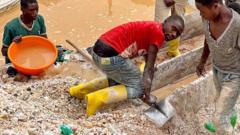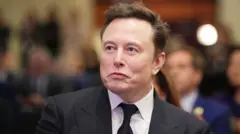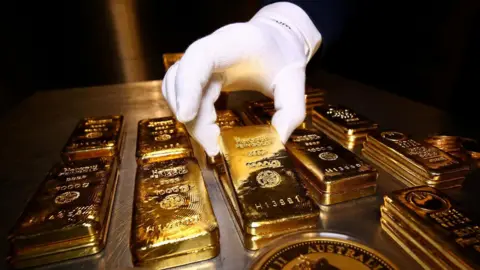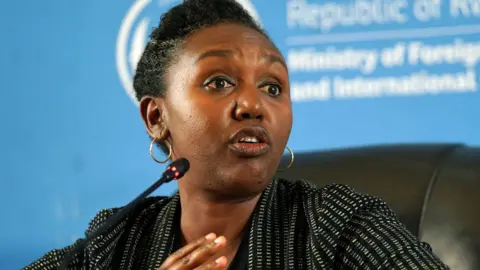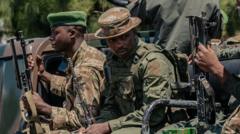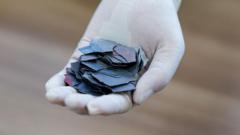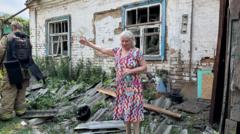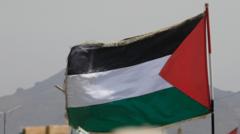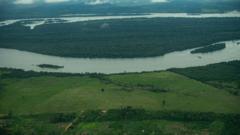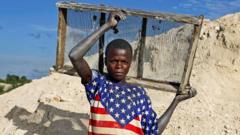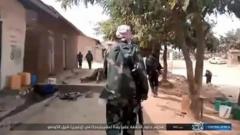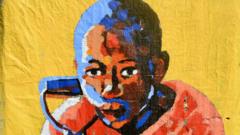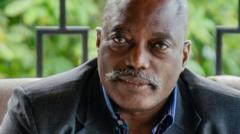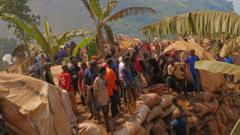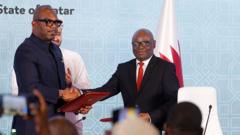In the heart of North Kivu province in the Democratic Republic of Congo, the Rubaya mine stands as a crucial site for coltan extraction, vital for producing mobile phones globally. Recently, M23 rebels allowed limited media access to this expansive operation, revealing a bustling workforce amid the chaos of a long-standing conflict.
Around 10,000 miners, busy day and night, toil to extract coltan from the rich mineral-laden earth, utilizing shovels and hand tools in treacherous conditions. For some, such as Peter Osiasi, the work is laden with hardships, yet he emphasizes the importance of mining in changing his life by enabling him to save for a dowry and marry. “Mining has really helped me," Osiasi remarked, reflecting on the difficult realities of high temperatures and harmful gases found deep underground.
Despite long-standing ethnic tensions and complex regional conflicts, particularly between the DRC and Rwanda, the Rubaya mine has drawn significant attention from global investors. As part of a peace process, a ceasefire was recently agreed upon on June 27 in Washington, where both countries seek to address the ongoing instability. However, M23's control, especially over strategic areas like Goma, has made the situation precarious. Observers note that foreign interests, including the US, seem focused on exploiting mineral resources for strategic gains amid allegations of Rwanda’s backing of M23.
Amidst this turbulent backdrop, mine supervisor Patrice Musafiri insists the rebels have created a relatively secure environment. He points to the absence of armed men on-site and a new regulatory framework aimed at maximizing safety for miners. However, miners like Osiasi express concern over low wages despite the increased security. “We are paid very little money,” he lamented, underscoring the gap between the mine’s wealth and workers' compensation.
Political analysts suggest that the DRC government hopes attracting American investment will foster development—principally infrastructure—but questions remain regarding who would facilitate such ventures. The ongoing influence of the M23 complicates negotiation efforts, with various mediations being pursued, including those lead by Qatar.
Locals, still burdened by the specter of violence and suffering, hope for lasting peace and improved conditions. Osiasi conveys this sentiment poignantly, urging unity for peace in the region and greater remuneration for miners. As the world continues to rely on coltan for technology, the human cost of extracting this precious resource remains a critical and urgent issue within the DRC.
Around 10,000 miners, busy day and night, toil to extract coltan from the rich mineral-laden earth, utilizing shovels and hand tools in treacherous conditions. For some, such as Peter Osiasi, the work is laden with hardships, yet he emphasizes the importance of mining in changing his life by enabling him to save for a dowry and marry. “Mining has really helped me," Osiasi remarked, reflecting on the difficult realities of high temperatures and harmful gases found deep underground.
Despite long-standing ethnic tensions and complex regional conflicts, particularly between the DRC and Rwanda, the Rubaya mine has drawn significant attention from global investors. As part of a peace process, a ceasefire was recently agreed upon on June 27 in Washington, where both countries seek to address the ongoing instability. However, M23's control, especially over strategic areas like Goma, has made the situation precarious. Observers note that foreign interests, including the US, seem focused on exploiting mineral resources for strategic gains amid allegations of Rwanda’s backing of M23.
Amidst this turbulent backdrop, mine supervisor Patrice Musafiri insists the rebels have created a relatively secure environment. He points to the absence of armed men on-site and a new regulatory framework aimed at maximizing safety for miners. However, miners like Osiasi express concern over low wages despite the increased security. “We are paid very little money,” he lamented, underscoring the gap between the mine’s wealth and workers' compensation.
Political analysts suggest that the DRC government hopes attracting American investment will foster development—principally infrastructure—but questions remain regarding who would facilitate such ventures. The ongoing influence of the M23 complicates negotiation efforts, with various mediations being pursued, including those lead by Qatar.
Locals, still burdened by the specter of violence and suffering, hope for lasting peace and improved conditions. Osiasi conveys this sentiment poignantly, urging unity for peace in the region and greater remuneration for miners. As the world continues to rely on coltan for technology, the human cost of extracting this precious resource remains a critical and urgent issue within the DRC.

